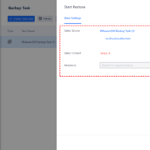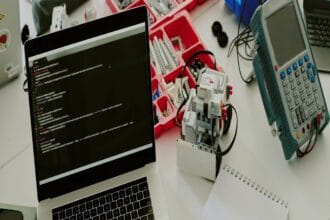Building software means writing numerous lines of code and we all know how complicated coding can get. You can have two pieces of code that can help an app perform the same functionality but the underlying difference between the two codes is that one might have a clean and easily readable code whereas the other is just a mess.
Having a clean and readable code is necessary if any changes or updates are required to be done to the code or app in the future. Such code also works more efficiently. And it is entirely up to the developers how best they can write the code.
Therefore, in this article, we provide you with the best Java practices employed by the top Java development companies in the world. You can implement them with any Java framework of your liking to write clean and efficient code.

Best practices for writing Java Code
1. Maintain a sound project structure
The first and most important thing to consider while writing clean code is to have a sound project architecture. This will also help boost your search time for the files. There’s no written rule on how you should set up your project structure but certainly, you can follow some best practices for it.
You are free to pick the pattern of your choosing but the Java tools strongly recommend that you follow a specific structure. Maven, a Java tool, proposes that a developer should include four types of folders in their projects where you can store the source files and test source files of your project.
2. Code reviews are your friend
Many developers don’t like doing code reviews because they are very tiresome and time-consuming. But what they don’t know is a code reviewer is often a software developer who acts as another layer of quality analysis by finding out bugs, issues and discovering edge cases.
That being said, if you shift your perspective a little, you can see that a code review will also act as a readability test. Since another developer is going to review your code, they have to read it first and that will determine how readable your code is for other Java developers and whether they can understand the logic behind your code or not.
So even if a reviewer gives you a remark about small things like spaces between the code lines, accept them graciously. It might look like nitpicking but little things like this can help and can come a long way in improving the readability of your code.
3. KISS & DRY
When you are making a list of best coding practices, you can not afford to leave out KISS and DRY.
The first is Keep It Simple, Stupid, or KISS. it warns you not to make your code unnecessarily complex. If a function is small then a code might not be more than around 20 lines. And a function should only be able to do what’s stated in their name and nothing more should be added to them. Practicing KISS can ensure that your Java code remains short and can be easily read by another human.
The second ultimate best practice is Don’t Repeat Yourself. Repeating your code is usually the number one reason why your code is filled with so many bugs or is facing problems with software development. Having duplicate code means whenever you are making changes to the logic of the code, you have to implement those same changes in multiple places. And that would spell disaster. After seeing repetition, developers tend to use refactoring features of their IDEs and extract methods.
4. Use simple Names
Every technique, variable, and class you are using in your code should have an easily describable name. So, when other developers read your code, they can understand what your code is and what it does. Your code should appear as lines from a novel that when put together, flows like a story. Your code should be able to tell the story of what your app does.
This will also make it easier for QA experts to test and debug your code. Making changes to or updating it will also become easier.
Programmers must choose short and catchy names that are quick to remember to determine what your logic does. If you are labeling your code or logic a name with more than 3-4 words then it becomes hard to read and understand. So, try to keep the name of each part of your code as short as possible.
It might pique your interest to know that the most distinguished feature that made Java stand out from programming languages such as C was that it has readable object names. So there is no need to waste it by complicating them all unnecessarily.
5. Clean code is needed everywhere
Writing clean code isn’t a prerequisite just for the production of the product but also for writing test environments. It has happened many times that a developer has written a clean code for the production but the test code for that product was just complicated.
So, how to write clean code for tests too? Well, do the same things we mentioned in this blog, do not repeat your code, and do not write more than 20 lines of code for small functions and features, and more. Your test methods shouldn’t occupy more than half of the screen space.
It helps programmers figure out what is the logic of the code. You can also apply other Java best practices we discussed here.
6. Remember about unit tests
Even if you have to conduct a simple code refactoring then also it is necessary to set up a unit test before.
Because if you are doing something to your code to increase its quality or readability, the chances are high that you might also have messed up something. So it is just a simple rule to remember, refactor to have a clean code, and do unit tests to refactor the code.
In addition to that, while doing a unit test, a developer has to divide their code into different parts which helps in understanding what that specific part of code is supposed to do.
7. Write good comments and documentation
Some developers think that having clean code means there is no need for documentation. Since the code is easy to read and understand, why waste any effort on drawing up documentation that ought to do the same thing, right?
But do not forget, no matter how clean your code is, nothing can ever replace the proper documentation comments. so proper documentation is very critical too.
And by commenting it doesn’t mean describing the same as what’s in the name. You have to provide more supporting information and details about the logic of the project. You also need to explain specific terms and principles that are not easily deductible by others from your code. Additional information such as these also proves to help enhance the code quality in the long term.
It is highly recommended that to imply this Java best practice, you should maintain your documentation in the Javadoc comments.
8. Your code should be visually elegant
Imagine you got your hands on a book whose pages consist of sentences that are just pieced together in different sizes of indentations. Even the margins are different on every page and the spaces between the lines vary from sentence to sentence. Would you like to read such a disorganized and visually displeasing book?
Leaving a line empty between different methods, making proper indentation, adding close brackets the same way in the entire code, dividing the line of code and many more things might seem insignificant with respect to the main goal of developing a product but these are the practices that make your code readable. And as we already discussed before, such little things make a big difference.
Final words
A good code is one that any machine or human can easily read and understand. Writing clean code is of course a skill, which can’t be mastered overnight. Also, you have to learn and remember the guidelines and basic principles of coding. Without a doubt, writing clean code is beneficial for everyone associated with the project, may it be programmers or business owners.








